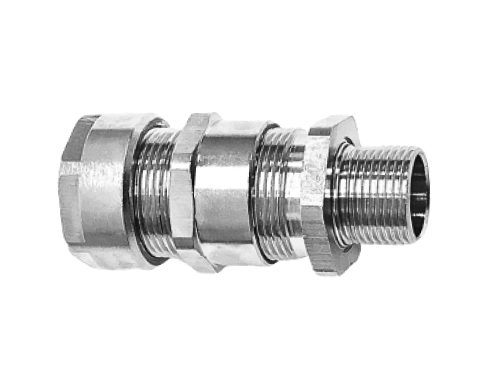Choosing the Right Cables Glands: Factors to Consider
In today’s interconnected world, where data and electricity flow through cables like blood in veins, choosing the right cable gland might seem like a mundane task. However, it’s a crucial decision that can impact the safety, efficiency, and longevity of your electrical or data systems. Whether you’re a seasoned professional or a novice DIY enthusiast, understanding the factors involved in selecting the appropriate cables glands can save you from headaches down the line.

What is a Cable Gland?
Before delving into the factors to consider when choosing a cable gland, let’s start with the basics. A cable gland, also known as a cable connector or cable fitting, is a device designed to secure and protect the end of a cable as it enters an electrical enclosure, junction box, or piece of equipment. Its primary functions include providing strain relief, maintaining the integrity of ingress protection (IP), and preventing the cable from being pulled or twisted.
Types of Cable Glands
Cable glands come in various types, each suited for specific applications and environments. Understanding the differences between these types is essential for selecting the right one for your needs. Here are some common types of cable glands:
1. Armored Cable Glands:
- Suitable for cables with metal armor or braid.
- Provide enhanced protection against mechanical damage and environmental factors.
2. Non-Armored Cable Glands:
- Designed for use with cables lacking metal armor.
- Offer protection against ingress of dust, water, and other contaminants.
3. Explosion-Proof Cable Glands:
- Specifically engineered to prevent the propagation of explosions from hazardous areas to safe zones.
- Ideal for applications in potentially explosive environments such as chemical plants and oil refineries.
4. EMC Cable Glands:
- Designed to maintain electromagnetic compatibility (EMC) by preventing electromagnetic interference (EMI) or radio frequency interference (RFI).
- Essential for applications where signal integrity is critical, such as telecommunications and medical equipment
Also Read :- Understanding Cables Glands: A Comprehensive Guide
Factors to Consider
Now that you’re familiar with the basic types of cable glands let’s explore the key factors to consider when choosing the right one for your application.
1. Cable Diameter:
- Ensure the cable gland’s size matches the diameter of your cable.
- Avoid selecting a gland that is too small, as it may damage the cable or impede its functionality.
2. Material Compatibility:
- Consider the environment in which the cable gland will be installed.
- Choose materials that are resistant to corrosion, UV exposure, chemicals, and extreme temperatures.
3. Ingress Protection (IP) Rating:
- Determine the level of protection required against dust, moisture, and other foreign objects.
- Select a cable gland with an appropriate IP rating to ensure the integrity of your electrical or data system.
4. Installation Method:
- Evaluate the ease of installation, especially if you’re handling the task yourself.
- Choose a cable gland with a user-friendly design and clear installation instructions.
5. Environmental Conditions:
- Consider factors such as temperature fluctuations, exposure to water or chemicals, and the presence of vibrations or mechanical stress.
- Select a cable gland that can withstand the specific environmental challenges of your application.
6. Certifications and Compliance:
- Ensure that the cable gland complies with relevant industry standards and regulations.
- Look for certifications such as UL, CE, ATEX, or IECEx, depending on your location and industry requirements.
7. Budget and Long-Term Costs:
- Balance the upfront cost of the cable gland with its long-term reliability and durability.
- Avoid compromising on quality to save money, as it may result in frequent replacements or maintenance expenses.
Conclusion
Choosing the right cable gland is not just about selecting a piece of hardware; it’s about ensuring the safety, efficiency, and reliability of your electrical or data systems. By considering factors such as cable diameter, material compatibility, IP rating, installation method, environmental conditions, certifications, and long-term costs, you can make an informed decision that meets your specific requirements. Whether you’re wiring a new building, upgrading an existing infrastructure, or simply replacing a faulty component, investing time and effort into selecting the right cable gland will pay off in the long run.
Note :- If you need more ideas about cables glands, you can find them on this wingsmypost.com.

